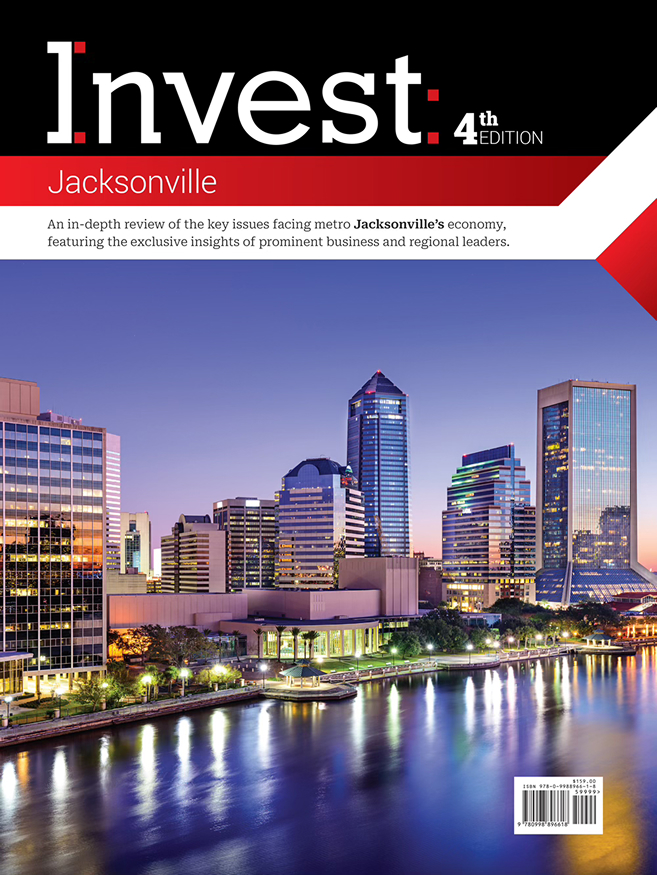Maria Vazquez, Superintendent, Orange County Public Schools
In an interview with Invest:, Maria Vazquez, superintendent of Orange County Public Schools, shared strategies to address the challenges in hiring and retaining educators, explained why it is committed to expanding its magnet programs, and discussed factors that underscored the unique character and appeal of Orange County as a place to live.
What is the state of Orange County’s public school system, considering recent recommendations for 15 new schools?
It is quite evident that this year has been the best for us since the pandemic. We are witnessing notable progress, notably in the academic performance of our children, which is truly encouraging. Additionally, the initiatives we have implemented to address mental health concerns are yielding tangible results. The growing number of partners collaborating with us in the community underscores our commitment to effectively educating our youth. All signs point to us maintaining our position as the leading district nationwide.
What are some of the challenges facing OCPS, and what are the strategies for navigating them?
We are still facing challenges in hiring, much like what is happening nationwide. There is a noticeable decline in the number of individuals pursuing careers in education, a trend echoed in the closure or consolidation of education programs in colleges and universities. This has prompted us to reassess our recruitment and retention strategies. While retaining and attracting staff remains a concern, we have implemented a significant 9% raise, a historic move aimed at addressing this issue.
Moreover, we are collaborating with local educational institutions and Bloomberg to explore credentialing as a pathway to teaching. Our “grow your own” initiative with Valencia College involves engaging high-school students early, offering them experiences and dual enrollment opportunities. Graduating with an Associate of Arts degree, they can seamlessly transition to Valencia for their four-year degree while working as substitute teachers, earning a salary concurrently. This holistic approach has made this year quite promising for us overall.
What plans are in place to expand magnet programs further to offer more choices for families in the district?
Recognizing the importance of school choice for families, we are dedicated to expanding our magnet programs. Currently, we boast 41 magnets across the district, with 45 schools achieving the esteemed designation of Schools of Excellence this year, which is a testament to our commitment to student achievement. Additionally, we have proudly earned the title of the best community for music education in the United States for the eighth consecutive year, highlighting our investment in music education.
Our comprehensive arts programming, encompassing both visual and performing arts, ensures every student receives exposure to these enriching experiences. From elementary to high school, diverse offerings abound, fostering engagement and connectivity among students. The arts serve as a vital tool in addressing chronic absenteeism, providing students with a sense of connection and purpose that keeps them engaged and motivated throughout their academic journey.
Furthermore, arts education contributes to holistic development, enhancing students’ mental well-being, fostering peer connections, and nurturing creativity. By nurturing students’ interests and providing diverse pathways for exploration, we empower them to make informed choices and pursue their passions upon graduation.
What traits are seen in today’s students that are exciting to see them bring into the workforce over the next decade?
That is an excellent question, one that has sparked extensive discussions regarding our children’s preparation for the future. While we aim for them to graduate and walk across the stage, it is equally crucial for them to do so with a plan in hand. This plan may involve a traditional four-year college path or something entirely different.
In our efforts to reimagine education, we have engaged in conversations with various sectors of our community to explore better ways to prepare students not just for graduation but also for meaningful contributions to the economy and society. Many industries are seeking skilled workers, prioritizing practical skills over traditional degrees. Soft skills, such as collaboration, problem-solving, and effective communication, are highly valued, alongside attributes like punctuality and responsibility.
We are striving to instill these essential skills in our students through our curriculum and experiential learning opportunities. It’s crucial for them to understand the importance of responsibility and professionalism in the workplace.
Moreover, I am deeply impressed by the huge sense of advocacy, resilience, and empathy demonstrated by today’s youth. Despite facing significant challenges, they exhibit a remarkable ability to speak up, persevere, and empathize with others. This resilience and empathy give me tremendous hope for the future.
What attracts businesses and families to the Central Florida area, especially Orange County and Greater Orlando, and what strategies are essential for retaining them?
Firstly, I want to express how incredible Orlando and Central Florida truly are in terms of community. This region is exceptionally diverse, not just in terms of ethnicity and culture but also in thinking. Despite its size and growth, there is still a strong sense of community reminiscent of a small town, which is evident in various neighborhoods across Central Florida.
Economically, we are experiencing significant growth across all areas, from downtown to Lake Nona and Horizon West. This growth is fueled by the diverse population that calls Central Florida home. People from various backgrounds and countries contribute to the vibrant melting-pot culture, fostering a sense of belonging and community.
Moreover, Central Florida’s appeal extends beyond its sunny climate. Our strong economic drivers and innovative thinking attract businesses seeking to capitalize on our community’s potential. A significant draw for these businesses is our exceptional schools, boasting state-of-the-art facilities and dedicated teachers. The average age of our school buildings is an impressive 12 years, which is a testament to our commitment to providing top-notch education.
What is the outlook for OCPS for the next two to three years, and what are the top priorities within this time frame?
Moving forward, our focus will be on expanding choices for families in education. This could involve exploring micro-schools, public-private partnerships, and closer collaboration with industries to provide more internship and apprenticeship opportunities. We need to rethink how we utilize time, space, and resources to deliver the best education possible for our students and families.
Funding remains a significant concern, despite recent increases from the state. Teacher pay in Florida still ranks low compared to national averages, posing challenges in recruiting and retaining educators. As we address the lingering effects of lost learning and work to narrow opportunity gaps, we must identify and replicate effective practices based on research.
Rethinking traditional schooling methods is crucial. Technology and community resources offer opportunities for students to learn real-world skills within the context of their interests and future careers. While classrooms will still play a role, we need to provide students with more agency in their learning experiences, leveraging available tools to their fullest potential.













